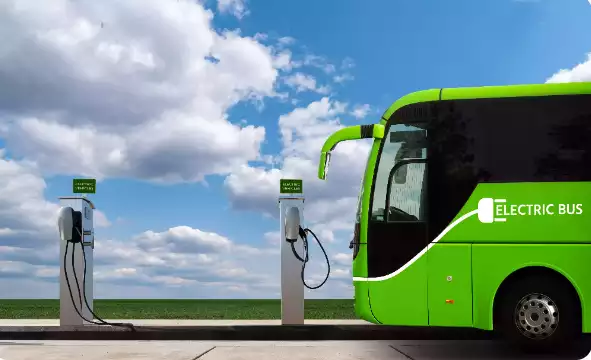
Electric power is poised to drive the future of transportation. With cleaner, quieter, and more cost-effective solutions, electric transportation not only benefits the environment but also provides a compelling economic case, making it the clear path forward for a sustainable future. With public awareness of climate change and its consequences reaching unprecedented levels in recent years, there is a need to deploy electric buses as a viable mobility model.
A NITI Aayog report highlights electric-buses could save India up to USD 60 billion in fuel costs by 2030. Electric buses could prevent the emission of over 1 gigatonne of CO2, making them a crucial component in India's efforts to combat climate change. By transitioning to electric buses, India can significantly reduce its urban air pollution levels, improving public health and quality of life in its rapidly growing cities. With Indian cities rapidly expanding, traditional commuting models may soon be inadequate. Electric buses offer not only a smoother but also a sustainable mode of transport. Beyond reducing greenhouse gas emissions, electric buses also help to decrease noise pollution and improve the overall quality of life in urban environments.
The public demand for electric two-wheelers and four-wheelers has improved considerably in recent years. The young and Gen-Z, seem to be going electric believing in the adage of “You are what you drive!”. Consumers are willing to pay extra for products manufactured in an ethical and environmentally responsible manner. Electric buses, with their minimal carbon footprint and reduced air pollution, align perfectly with the ethos of this consumer segment in India.
Across the world, leading economies have already started their transition from fossil fuel to electric vehicles. Countries such as Sweden and Germany are testing models such as eRoad-Arlanda where an EV can be charged directly from the road, while in motion. Such an innovative use-case of optimization tells us the urgency and innovation-quotient in the sector.
India has made a strong commitment to the Paris Agreement, aiming to reduce its carbon intensity by 33-35% by 2030. Transitioning to electric buses is a significant step towards achieving these climate goals. Investing in long-range electric buses is not just about saving money and the environment; it's also about driving economic growth. According to the International Renewable Energy Agency (IRENA), the transition to electric vehicles could create up to 10 million direct jobs worldwide by 2030.
As we stand at this crossroads of urban development and environmental stewardship, electric buses offer a path forward that balances progress with sustainability. They represent not just a change in how we power our vehicles, but a shift in how we think about our cities, our environment, and our collective future.
The next time you see an electric bus gliding silently down your street, remember: you're witnessing more than just a vehicle. You're seeing a glimpse of a cleaner, quieter, and more sustainable urban future. And by choosing to ride, you're not just taking a journey across town—you're taking a step towards a better world.
The Author is the MD & CEO of GreenCell Mobility
GreenCell Mobility, promoted by Eversource Capital, is a leading player in the EV mass mobility segment, involved in both intercity and intracity travel. The company runs a pioneering intercity bus brand, NueGo.
NueGo is the first organized player and national brand in electric mass mobility in the country with operations across 100+ cities.
Disclaimer: The copyright of this article belongs to the original author. Reposting this article is solely for the purpose of information dissemination and does not constitute any investment advice. If there is any infringement, please contact us immediately. We will make corrections or deletions as necessary. Thank you.





